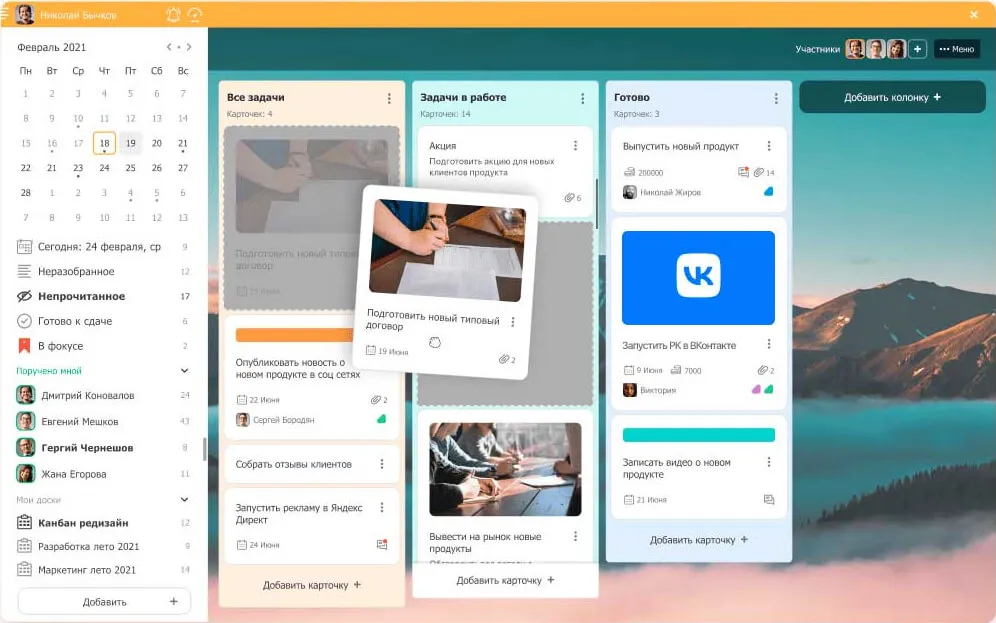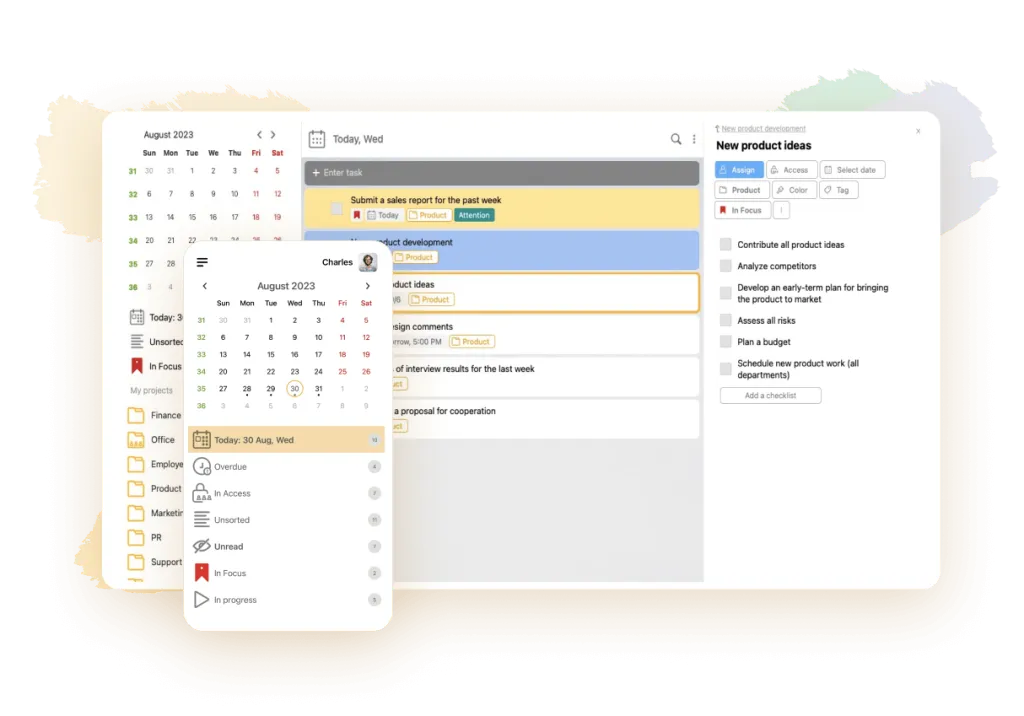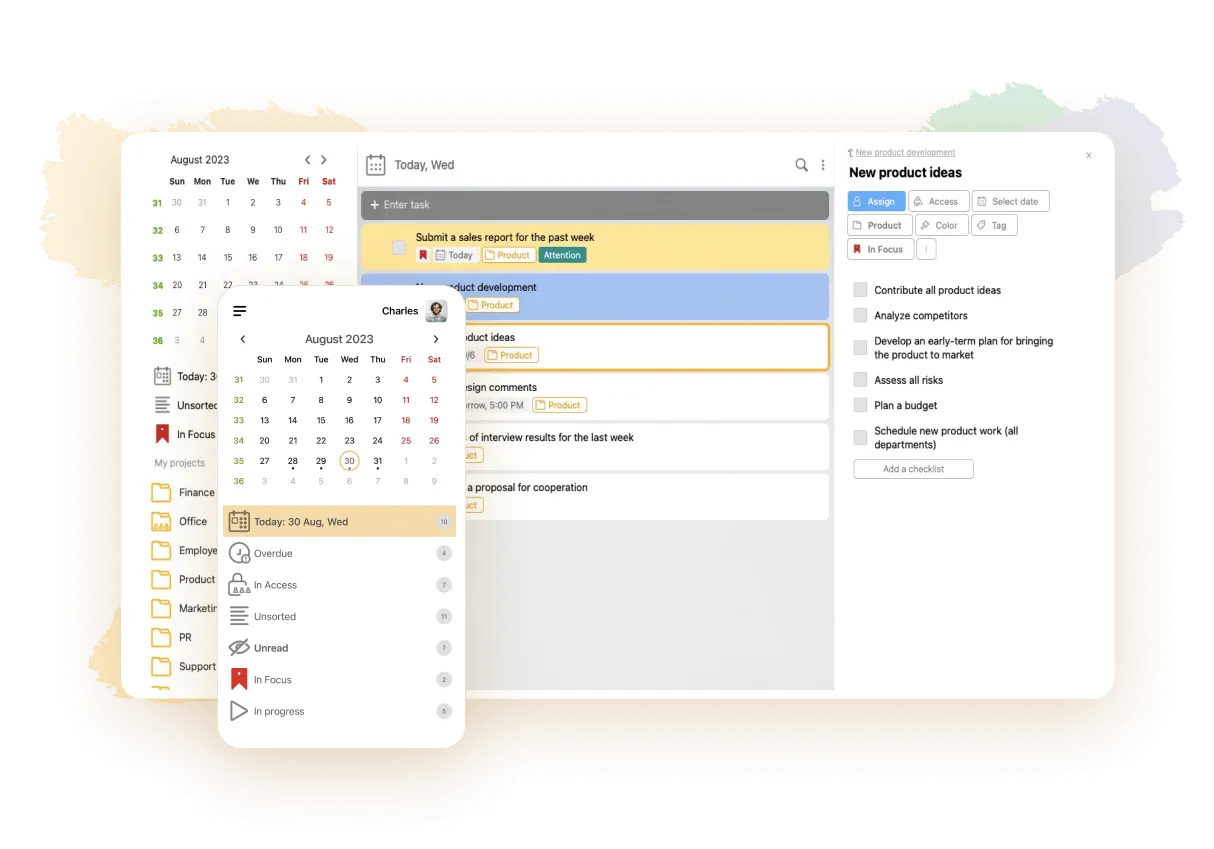
Ted Scott
March 13, 2024
Project activities have become a stable trend in recent years, allowing to obtain quality development products at lower costs. Various methods, tools and technologies are used to manage workflows in projects. Today we will dwell more on Agile, Scrum and Kanban methodologies. We will tell you how these concepts differ and which of these approaches is more convenient to use when developing software or commercial products.
What is Agile
Initially, work on projects was based on a clear plan, without any deviations from the TOR. This did not quite suit the developers. They realized that the development process should be flexible, so that it could be changed at any stage if a more competent solution to a problem was discovered. According to such principles, The Agile Manifesto was formulated in 2001, describing the core values of the Agile philosophy:
- People and their interaction in a team are more important than processes and tools. In order to produce a quality, useful product, it is necessary to understand what the customer wants to see. Therefore, it is important to build effective communication between the business and team members.
- A working product is more important than any reports and documents. Instead of estimates, specifications, requirements, Agile methodology uses “User Stories”, which is a step-by-step plan of tasks approved by the client. All tasks are divided into separate stages, and deadlines are set for their fulfillment. This makes the work clear and visual for all performers.
- Productive cooperation with the customer is more important than discussing the terms of the contract. Under normal circumstances, communication with the customer is limited to agreeing on deadlines and order requirements. When using the Agile methodology, the client constantly cooperates with the team. This greatly increases the productivity of work, avoids defects and deadlines from the performers.
- Any initial plan can be modified. This approach makes the technology suitable for unpredictable, constantly changing projects or for teams working on a new product.
Advantages of this method:
- Openness to change. Thanks to the flexibility of planning, the team can quickly make adjustments to the project to ensure that the finished product meets the customer’s needs and requirements as closely as possible.
- Clear presentation of information. The team uses common software in their work, so each team member can see their tasks and knows what their colleagues are working on at the moment.
- Minimize the threat of deadline disruption as testing and communication with the customer on the product occurs after each sprint.
- Favorable team environment, due to the fact that each employee feels his importance for the project.
- Reduce routine operations that distract from the development process.
In the following table, we have provided examples of when it is better to use the traditional Waterfall and Agile cascading approach:
| Waterfall | Agile |
|---|---|
| The customer has clear requirements for the project and does not intend to change them. | The client doesn’t fully understand what they want, so their requirements change as the project progresses. |
| The team is working on a complex product that requires strict adherence to development techniques. | It is important to deliver the product in a short time with a minimum of revisions. |
| The customer does not plan to be directly involved in the project work. | He actively participates in the work process, attends general meetings, and comments on tasks. |
| The team is working on a typical project that they have done before. | A new project is being developed |
Agile technology has revolutionized Project Management. But by itself it does not provide quality work, it is only a set of rules and techniques that are used in IT and ordinary life. So, based on Agile methodology, other agile approaches emerged: Scrum, Kanban and Lean.
What is Scrum

It is a framework used in Agile project management. The goal of scrum is to develop a software product that meets the customer’s requirements in the shortest possible time. Workflows are broken down into iterations and sprints. An iteration is a time period during which the team works on a certain stage of the project. At its end, it demonstrates to the customer some intermediate result that has business value. It includes planning, development (sprint) and testing. Sprint - the development process itself lasting from 1 to 4 weeks.
Scrum work is based on the following principles:
- Transparency. All participants are given free access to information on the project.
- Adaptations. The activity vector can be changed at any time without losses for the project.
- Updates. All team members strive to improve the product by improving the development process.
The Scrum team includes the product owner (an intermediary between developers and the business), a scrum master responsible for communication and adherence to Agile values, and developers working on the ToR. Its activities schematically look like this:
- The product owner hands over the task to the team.
- Developers familiarize themselves with the plan, dividing the project into blocks.
- Set the duration of the sprints.
- Tasks are distributed among all team members.
Each sprint ends with a meeting to discuss the completed tasks. At the end of the iteration there is a release, where the customer is shown the result of this stage of the project. He gives his evaluations and recommendations for further work.
Advantages of the methodology:
- Focusing on user interests to continuously improve the value of the product.
- Flexibility, the ability to reprioritize tasks in a timely manner.
- Easy to learn, accessible to all users.
- Maximize results.
Scrum technology is suitable for self-organized and cross-functional teams that are able to set up workflows independently.
What is Kanban

This project management method was created in Japan, at one of Toyota’s plants, to modernize the company’s car manufacturing processes. It is based on the visualization of goals, objectives and progress. Teams working on Kanban technology break down the work on a project into individual steps. For this purpose, a virtual or physical board with cards is used. It is divided into columns corresponding to the stages of the project, through which all cards with tasks pass. The number of columns may vary depending on the specifics and scale of the project being implemented. In the classic version, there are three:
- Scheduled;
- In the works;
- Completed.
For even loading of executors, Kanban methodology provides WIP-limits, which impose restrictions on the number of simultaneously executed tasks. Therefore, the executors cannot start new tasks until they finish the started tasks. Thanks to this approach, they are completed more quickly and with higher quality.
Important indicators of the method are task time and total cycle time. They demonstrate the efficiency of the team’s work. If the card moves quickly, everything is fine. If it “hangs” at some stage, it is necessary to understand whose work needs to be optimized. To this end, a summary diagram showing the number of work tasks at each stage of the project is used to identify “weaknesses” in the development.
Advantages of the methodology:
- Visibility of all work processes.
- Flexibility due to the lack of clear roles and practices, allowing any changes to the project to be made quickly.
- Continuously working on tasks that are not tied to deadlines and sprints.
- No duplication of tasks, even loading of team members.
Main differences between the methods
Agile, Scrum and Kanban refer to agile methods of organizing work on projects, demanded in IT and other industries related to the creation of new products. Agile is a general philosophy that represents a life approach, a management style. Scrum and Kanban are its separate techniques.
The following features distinguish the Scrum framework from other Ajail technologies:
- Dividing the work into sprints;
- Creating a product backlog showing the sequence of work;
- Assignment of Scrum Master and Product Owner roles;
- Daily short update meetings.
Kanban methodology is used to visualize processes, helps to predict the result more accurately based on the analysis of previous work. Its implementation ensures an even workload for each performer and the team as a whole. It helps to identify problem areas and eliminate “stalled” tasks that slow down project delivery.
Use LeaderTask for project management

Various methods and tools are used to effectively manage Agile projects. Among them is LeaderTask application, with the capabilities of a planner, task manager, electronic diary, which has the necessary set of tools for organizing tasks.
Allows you to manage personal and collective projects, create tasks for yourself and other executors, and track their fulfillment on the Kanban board. The system will send a timely notification about the changed status of the task, inform about a scheduled meeting or event. All project information will be stored inside the program with shared access for team members. This will make the work more organized and transparent. Provides an opportunity to share files, ideas, chat, store all important documents and files in one application. LeaderTask works on all digital platforms, including without internet, has a high-quality mobile version, so you will always be in the know about work, no matter where you are at the moment.
Conclusion
Agile is a common framework, a philosophical approach to project management that includes various methods and techniques. Scrum and Kanban are ways of working on the creation of a new product. Both of these methodologies are based on Agile. They are most often used in the IT industry, but can also be used in any business where change is constantly occurring.
The Scrum method is as consistent as possible with the values and principles of Agile. It is suitable for teams working under uncertainty and experimenting in the development process. When applying this technique, work processes are broken down into separate stages, development is performed with the active participation of the customer. This helps to achieve better performance from the team.
Kanban methodology provides management of tasks through their visualization. Implementation of this technology allows the company to respond quickly to any changes in market requirements, produce a better quality product, balance stock and actually used products.
- planning
- project-management
- time-management





